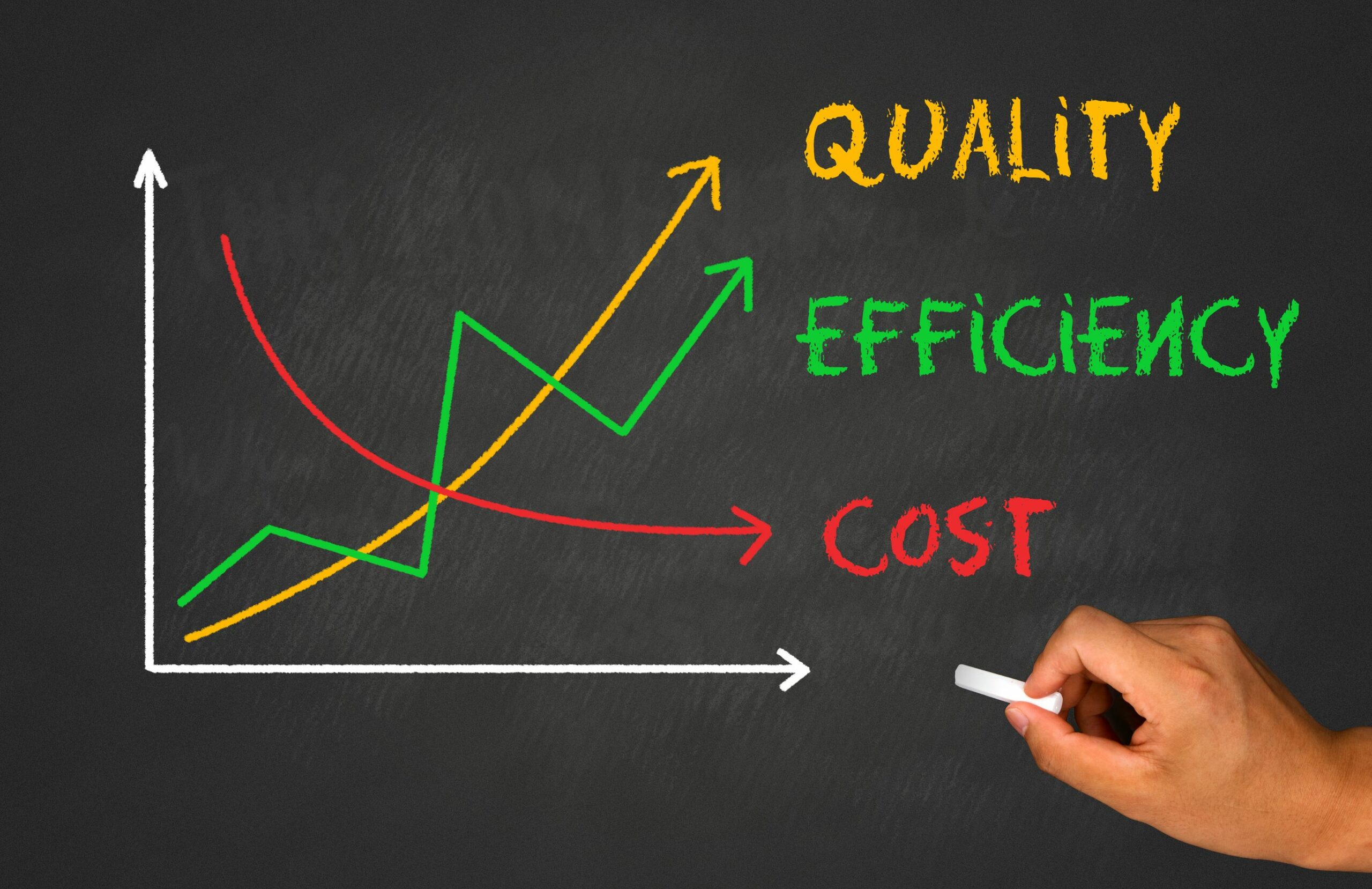[vc_row uxb_theme_class=””][vc_column uxb_theme_class=””][vc_column_text]Like many concepts, Value Engineering proves the adage that necessity is the mother of invention. VE arose, in the mid forties, from the need to discover innovative routes to product improvement and cost reductions at a time when shortages in manpower and raw materials were rife.
So, what exactly is Value Engineering and how does it work? In the wake of the Second World War, General Electric set about creating a methodology that sought to systematically offer to produce goods at the required quality at the lowest possible cost. The rules of this early methodology apply just as much now as in the forties, even in this less austere age.
Value Engineering is, in practice, a means to extract optimum investment value. It thrives still in the construction sector. Importantly, it must not be confused with cost-cutting per se. It is best described as a systematic set of procedures to secure essential functions at optimal cost, factoring in such economies, in considerations as capital, labour, and energy consumption.
For maximum bang for your buck Value Engineering is best undertaken early in a project, though it may effectively be applied at any stage in development. The core value comes from the multi-skilled people who know most about the job under consideration. Working in teams, such staff members are best placed to analyse the ‘as is’ before applied innovative engineering concepts to improving designs, materials and methods, but—and this is crucial—without compromising the client’s specification in terms of economy and function.
A Staged Approach
Value Engineering can be split into three distinct phases: Planning, design and methodology.
Planning
The planning phase benefits greatly from workshopping techniques which allow independent teams to subject the client’s facility to ergonomic scrutiny; facilitate the refinement of the client and end-users expectations; and set out the project’s key deliverables.
This is immediately followed by the active consideration of alternative means to achieve the same ends. Finally, the budget is re-considered to see whether proposed changes are financially manageable.
The Design Phase
This is where some of the most intensive work takes place. Designs will have advanced to the schematic stage. The key tool here is, again, the workshop—typically up to 40 hours long—at which client and VE representatives meet face to face to unpick the details of the proposed design. The emphasis lies in reviewing design, budgets and the implementation plan. Value is a tricky concept, its definition varying from client to client and even from one project to the next.
Approach
The workshopping stage brew aka down into five distinct stages.
The information Stage
Participants need to fully understand the project background and context, especially conditions which led to the current design strategy in the past. This is in most cases the job of the design architect, who makes a formal presentation on the topic. Key functions and issues arising therefrom are thoroughly analysed. Equally essential here is the need to determine, as precisely as possible, the client definition of ‘value.’
Creativity
Having understood the facts and definitions determining the overall project, teams move on to speculate on possible improvements. What if we change this parameter? Or substitute this material for that? Workshop participants actively focus on changes that would reduce overall cost while still preserving the client’s values and desired outcomes. This idea generating phase is non-judgemental—there are no bad ideas, just different proposals. The more ideas generated, the better; these will be thinned out and harvested in the next phase.
Evaluation
Now Value Engineering teams and client representatives confer to agree the criteria for evaluation of the ideas harvested in the previous phase. Ideas most likely to lead to added value or reduced cost.
Product development
The focus shifts in this phase to describing the pros and cons of recommendations. Each recommendation is presented within the context of the differences between this and previous versions. Detail may now be sufficient to merit the inclusion of diagrams and cost calculations.
Presentation
In this final phase the deliverable is a written report. This is accompanied by an oral presentation of the key facts and issues. To establish which proposals will carry forward to manufacturing, the following factors are discussed:
- All recommendations
- Project rationale
- Main cost impacts
An analysis of cost savings arising from a comparison between PVC-U vs Aluminium and wood might usefully and practically illustrate VE is action. Evidence exists for significant savings when choosing PVC-U over aluminium and wood—savings of at least 35% for instance. Cost benefits ramp up with increases in the U value.
One U-Value study on a 0.8 value for U demonstrated up to 60% savings over aluminium. PVC-U turns out to be far more energy efficient, better value for money, and virtually maintenance free. At the same time, achieving these savings does not come at the cost of compromised aesthetics or day by day performance. The use of PVC-U offers massive improvements in thermal efficiency over traditional alternative materials.
Pitfalls
Although VE is a proven-in-the-field discipline, it remains possible for even seasoned practitioners to make errors—often down to time constraints. There is a number of ways in which VE teams can actively guard against poor judgement.
Refuse to compromise on quality
It is not uncommon, where budget savings prove mandatory, for poorer quality products to be chosen. Yet the earliest design choices are often made on the basis of aesthetics and function. Bear in mind that it is usually possible to consider an alternative which is more cost effective but which preserves the desired aesthetics and functions.
Don’t close your mind to alternatives
VE allows practitioners to re-consider alternatives in light of recent industry changes, such as the availability of ‘new’ materials, not on the table when the project began. A good example might be where hardwood flooring figured in an initial specification but later benefited from the substitution of luxury vinyl flooring once it came on the market.
Stay Ahead
Last minute interventions by VE teams are not uncommon and are usually driven by the need to drive down costs. Consider, however, the value of early intervention by VE teams. This facilitates the possibility of importing raw materials or having some elements of the design custom built, where cost savings can be achieved.
Product Network Expansion
Any project will originally have included a sub-contractor list of preferred suppliers. It is essential, when VE teams get involved in making changes, that the original selection of providers is expanded. Doing so often throws up opportunities to switch supplier and save on budget.
Carpe Diem
VE teams can seize the opportunity to re-examine earlier work and seek improvement. Is the client still getting maximum value?
Hold to the production schedule
When VE teams arrive late in the project they need to take care that however well meaning their proposed changes they should, wherever possible, avoid altering the delivery date of the overall project.
Don’t budge on quality
Again, the easiest of VE interventions is to substitute for a cheaper alternative. The problem here is that doing so often involves a compromise on quality.
All Aboard!
It is an essential element of change management that as much effort is expended on getting all project stakeholders on side, as possible. The first part of this process is the need to gain common agreement that change is necessary. A common analogy is that of the burning building. The change manager’s task is to get every one out of the old building (the existing state) and into the new building (the desired state). In a large project there are often those who do not accept that the building is on fire. If this happens on your project, do everything you can to get everybody on the same page. This will avoid disruption as the project develops.
A Case Study
Company A, a house-builder, decided to change their specification to avoid timber. Their drivers were, ease of use for occupants and weather tightness. The houses in question were to be erected in a controlled zone outside of a well-known city centre. This meant sustained interaction with the appropriate council. The council needed to be convinced that PVC-U could be introduced without loss of aesthetics
These discussions were fruitful, and ended with the council agreeing that the PVC-U could be substituted to good effect.
Value
The inclusion of Value Engineering into any design process, increases value and reduces cost. Even during then construction phase, value can still be added, through a mechanism known as VECP: Value Engineering Change Proposals. This often results in some form of gain share arrangement whereby the VE team share in the monetary gains afforded to their clients. NA win-win scenario.
Check and check again
Any project benefits from the kind of scrutiny that takes a second look at previous decisions as the project proceeds, always checking whether the client is still receive expected results. Previously, in would be fair to say that VE was primarily seen as a budget reduction mechanism, watering down the true intent of VE. Recently however, there has been an industry-wide return to the spirit of VE. The increasing prevalence of VE workshops has transformed the construction industry in recent times. This allows clients and service providers to work more harmoniously together to mutual benefit.
The role of digital technology
A proliferation of software applications which have been purpose built for the construction industry, enhance the ability of planners to conceptualise and even visualise the benefits of proposed changes. This software facilitates a sophisticated view of concepts such as ‘total cost of ownership’ Applications make it relatively easy to calculate a client’s return on investment through the use of algorithms which track real-time cost benefits across environmental, social and financial bottom lines.
Before such helpful technology existed, projects were often loaded, by default, with parameters from previous projects. Modern software allows for far more granularity—factoring in local market, economy, wage structures, climate and so on so that calculations are project specific. Software gives the client what the client most wants: a holistic approach, through their medium of these new and sophisticated digital tools.[/vc_column_text][vc_column_text]
Chris Nicholls
Commercial Director
[/vc_column_text][/vc_column][/vc_row]

